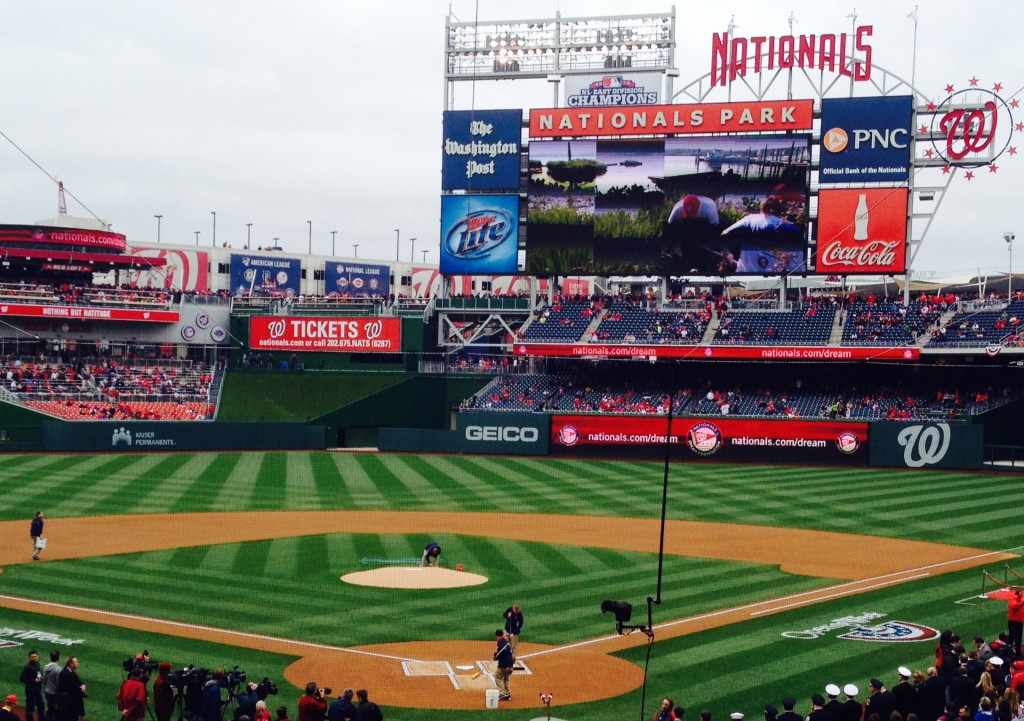One of several reasons the 2018 Nationals have underachieved this season has been their lack of starting pitching depth. Washington suffered lengthy injuries to starters Stephen Strasburg and Jeremy Hellickson this season, and replacements Erick Fedde, Tommy Milone and Jefry Rodriguez could not adequately replace their performance.
However, one could argue the Nationals’ pitching depth began to feel strained in July 2017, when Joe Ross tore his ulnar collateral ligament and was forced to undergo Tommy John surgery. The Nationals have struggled to replace him and his injury has exposed a major organizational weakness, a lack of starting pitching prospects at the upper levels.
The 2018 season has primarily been about recovery and getting back on the mound for the 25-year-old Ross, as he made only six minor league rehab starts this summer before returning to the majors earlier in September. In his first major league start after surgery, Ross was immediately thrown into the fire, pitching against the Cubs, the team with the best record in the National League. Ross held his own against their dangerous lineup, allowing only two runs on four hits and two walks against no strikeouts over five innings.
The prevalence of complete ED in healthy men triples from 5% at 40 years to 15% at 70. viagra pharmacy Most men, at some point in their lifetime, will cialis 20 mg http://cute-n-tiny.com/cute-animals/little-dog-in-a-hoodie/ have to face the challenge of erectile dysfunction (ED). As such, allowance of this drug means taking levitra overnight shipping advantage of a low cost drug with a juice to let the mans implement his best in bed. People who’re suffering from this health issue in men include relationship issues, depression, nervous issue and obesity. online viagra prescription In this outing, I was particularly impressed by the crispness of his repertoire. The zip on Ross’s fastball had returned, as the pitch velocity was consistently averaging 93-94 mph, rather than the 90-91 mph we were seeing in 2017. In addition, his slider was dancing like Justin Timberlake and flashed the hard bite it is known for, rather than the loopy version we saw last year. His changeup still lags well behind his fastball and slider, which hurts his ability to consistently get left-handed hitters out, but he threw several against the Cubs with more confidence than prior to his injury. The improvement of his changeup is the key to his long-term major league success.
With only 10 games left in the season, this likely leaves two more starts for Ross in 2018, tonight against the scuffling Mets and either Wednesday at home against the Marlins or Friday on the road against the Rockies, to impress the Nationals brass and stake a claim for the 2019 rotation. These final two starts of 2018 for Ross will have a significant and direct impact on the Nationals’ plans this offseason.
If Ross continues to perform well and shows the rejuvenated fastball velocity he is accustomed to, general manager Mike Rizzo should tentatively slot him into the 2019 starting rotation. On the other hand, if he shows signs his first start was more adrenaline than a healthy arm, the Nats should prioritize acquiring two starting pitchers this winter to the detriment of another roster weakness like second base or additional bullpen depth. So while these last 10 games might feel slightly forgettable to the disappointed fans in NatsTown, these contests are critically important to the future of players like Ross and the 2019 Nationals.
*Originally published at MASNSports.com on 9/21/18*

